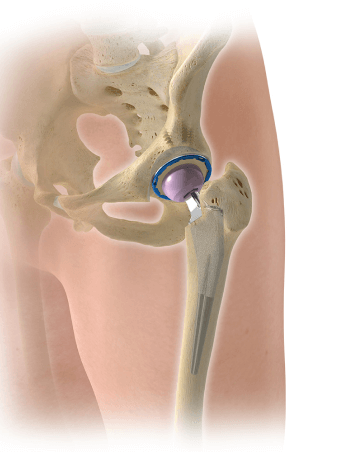Same or next-day appointments are often available!
Appointments:
(574) 800-1623
Minimally Invasive Surgery

As one of the highest-volume hip surgeons in the country, I usually choose to do hip replacements using a minimally invasive posterior approach because it has excellent benefits for my patients. Minimally invasive surgery, or MIS, means making smaller incisions for less scarring and a faster recovery. You can learn more about MIS here.
Taking a posterior approach means I make an incision at the back of the hip close to the buttocks. This is the most common total hip replacement approach for a reason—it’s safer and results in fewer injuries than an anterior (front) approach.
The minimally invasive posterior approach makes it easier to use high-quality implants that provide better function and last longer. Plus, it’s less risky than other surgeries, so it’s a safer and more effective choice for hip replacement. I’ve found that this method helps patients recover faster, getting them back to their usual routine sooner. Plus, it’s often done as an outpatient procedure, so patients can head home on the same day as their surgery, cutting down on long hospital stays.
There is a lot of misleading information out there about hip replacements and the benefits of anterior (front) or posterior (back) approaches. Here are some key insights I frequently review with my patients to help them understand their options.
There is a lot of misleading information out there about hip replacements and the benefits of anterior or posterior approaches.
— Dr. Jeff Yergler

Hip replacement surgery is a path to a more active and comfortable lifestyle. If you’re tired of living with hip pain, schedule a consultation to discuss hip replacement surgery with my team. With modern advancements and a dedicated recovery plan, you can look forward to a future filled with movement and joy.

South Bend Office
53880 Carmichael Dr,
South Bend, IN 46635
Phone: (574) 800-1623